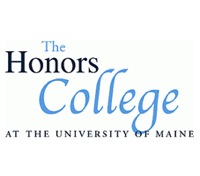Below is a summary of the abstract you submitted. Presenting author(s) is shown in bold.
If any changes need to be made, you can modify the abstract or change the authors.
You can also download a .docx version of this abstract.
If there are any problems, please email Dan at dar78@pitt.edu and he'll take care of them!
This abstract was last modified on March 28, 2025 at 4:54 p.m..

Non-tuberculosis mycobacteria (NTMs) are increasingly antibiotic-resistant pathogens that pose a significant threat to those with underdeveloped or compromised immune systems. NTM infections are on the rise globally, and bacteriophages have potential as an alternative treatment method to traditional antibiotics. Bacteriophages, viruses that can infect and kill specific bacteria, are hypothesized to be the most abundant biological entity on the planet and exhibit substantial genetic diversity. From an enriched soil extract from Edinburg, ME, we have isolated Cornbread, a lytic, cluster B1 mycobacteriophage, using the host Mycobacterium smegmatis mc2155. Cornbread’s particle morphology is Siphoviridae, and forms clear, ~1.0-mm plaques on a lawn of M. smegmatis. Cornbread’s genome is 68,651 bp long with a GC content of 66.4%. There are 102 predicted protein-coding genes and no tRNAs. Notably, Cornbread has no identifiable holin gene, which is similar to all B1 cluster phages. Additionally, its structural genes are located on the left arm of the genome, while replication genes are positioned on the right arm. The unique features of the phage genome, such as insertions and deletions, and the compatibility of phages with their bacterial hosts are important areas of study. Since Cornbread is a lytic phage, there is potential for it to be used in phage therapy. Phages selected for phage therapy are often lytic due to the lack of immunity repressors and integration cassettes preventing bacterial host integration. Further research needs to be performed including host range assays, identifying specific features of the genome, and exploring phage therapy applications.
